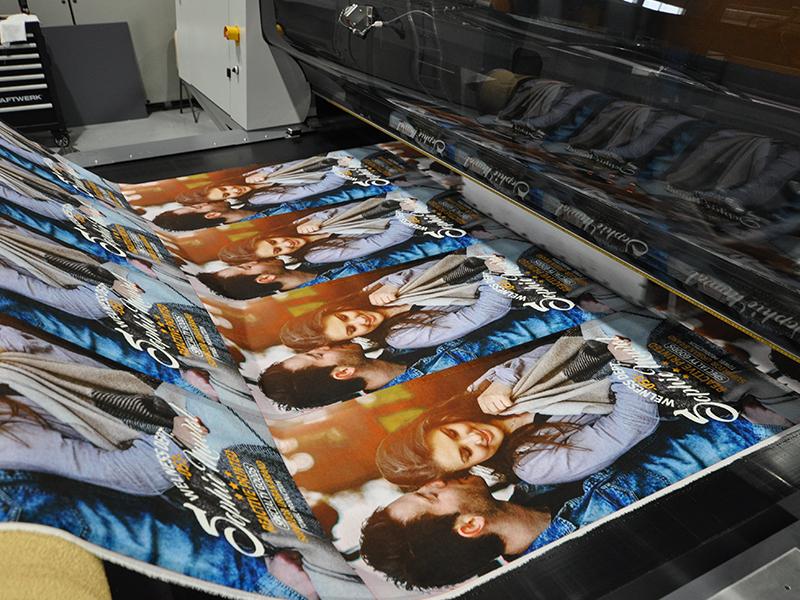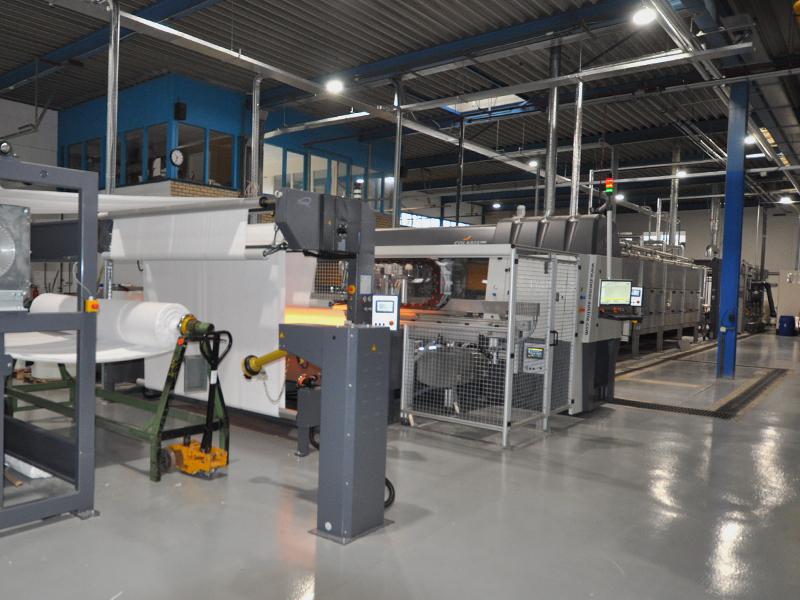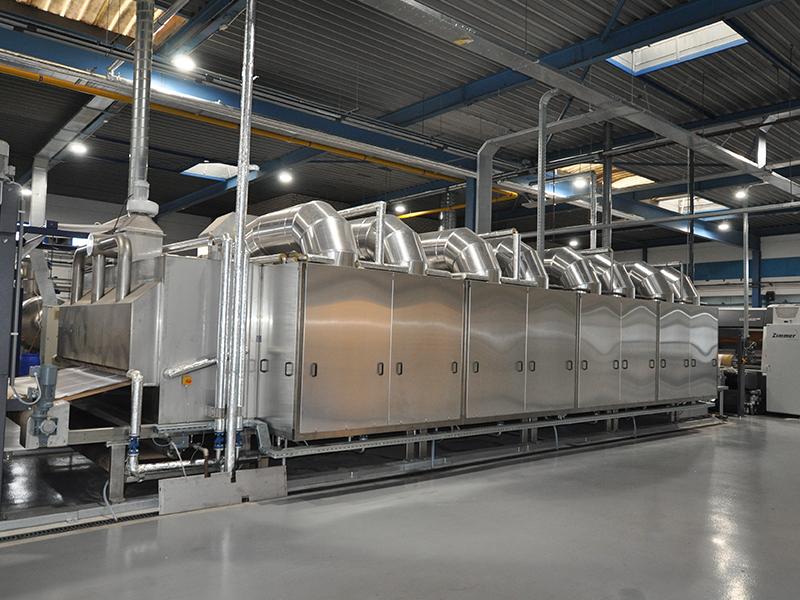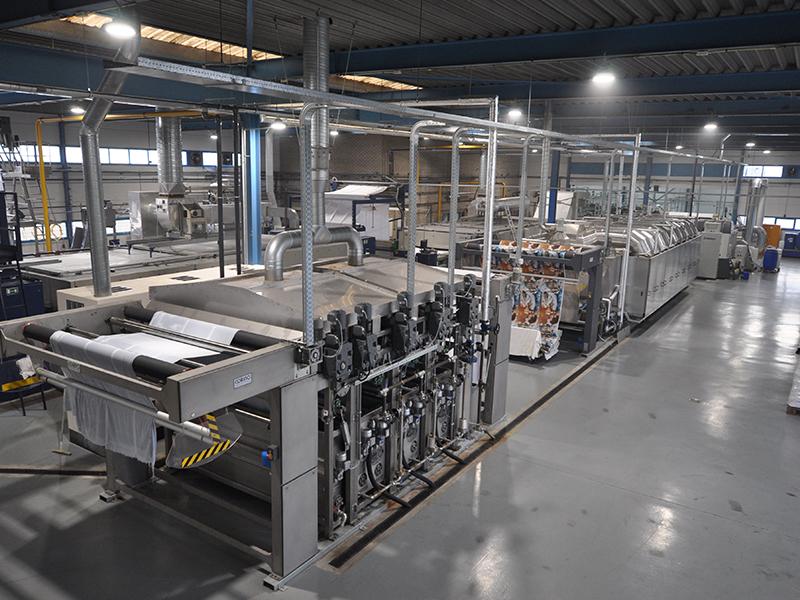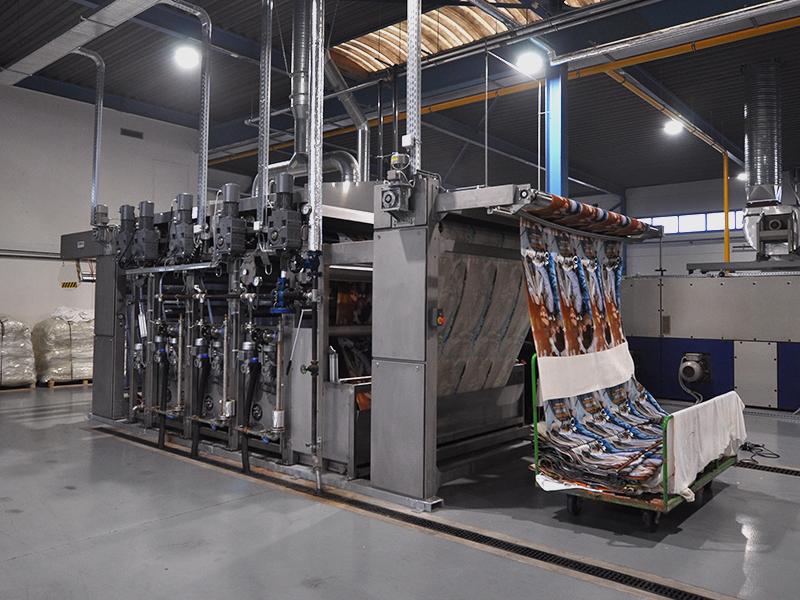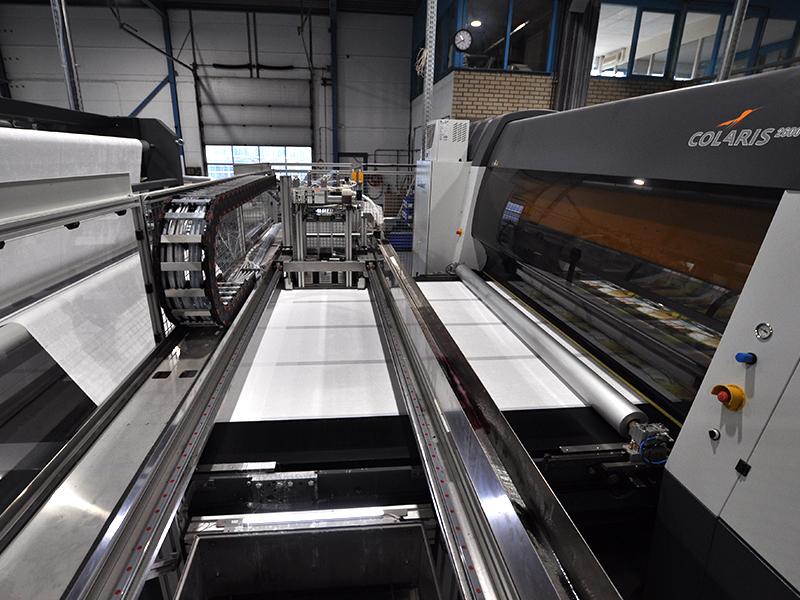WA Media GmbH 04/2017 | Till Barth
Reactive ink printing – pile-deep fascination
In early 2017, Araco introduced a real innovation in the textile finishing sector by establishing reactive ink printing. During our on-site visit in Enschede (Netherlands), the company demonstrated the production process and the impressive results.
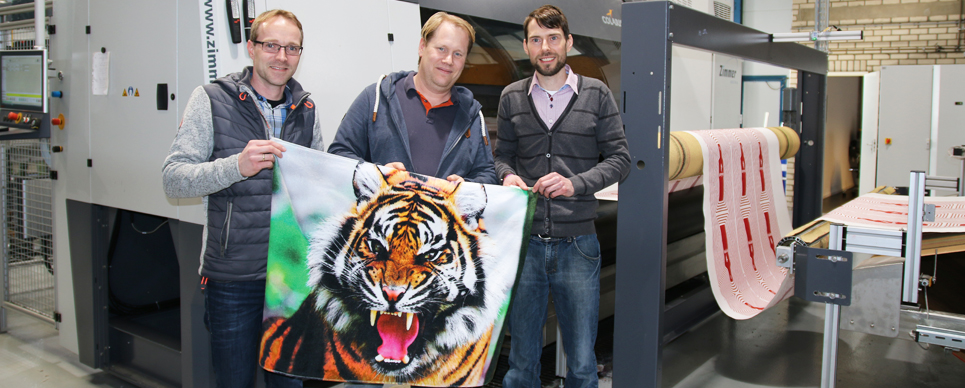
A T-shirt with photo print that reproduces the smallest details with razor-sharp precision; a shirt in which each individual piece is individually coloured - from the collar, shoulders, torso and sleeves to the cuffs; a terry towel that glows in a variety of polychrome colours: The first products Araco published with the brand new printing process at the beginning of the year impress all along the line. Reactive ink printing - the technical term - is a method of applying photorealistic motifs to cotton textiles in high resolution, brilliant colour reproduction and filigree gradients - quickly, individually and economic from very small lot sizes. Actually, photorealistic motifs on textiles are not something new per se - very good results can also be achieved by sublimation printing. Reactive ink printing, however, offers a number of advantages: "One of the weaknesses of sublimation printing is that it can only be applied to polyester textiles or textiles with an appropriate coating," explains key account manager Nikolas Hanft. "For reactive printing we use textiles from 100% cotton. Sublimation prints on cotton do not provide satisfactory results. With reactive printing, the ink penetrates deeply into the fibre and fixes as a chemical bond, which means significantly better fastness properties.”
Digital production process
The "Reactive Ink Printing" project was initiated and implemented over the past two years by Araco founder and managing director Henk Greftenhuis. "The printing process is used more frequently in retail, but is hardly known in the promotional products industry because it is very complex," says Senior Key Account Manager Stefan Rölver. "Initially, we had planned to offer this finishing method only for terry cloth products, but then we were so amazed about the initial results that we decided to extend production to other textile types as well".
In addition to terry articles, Araco also offers its new printing method for fabric bags, T-shirts and shirts or blouses. This step required more than a year of preparation. "The reactive ink printing method is not a secret, but it requires high investments - in appropriate machines and in development work," explains Hanft. "You can't just 'go ahead and print', you have to try, optimize and adjust for a very long time." In contrast to conventional printing techniques, in which finished textiles are processed, reactive printing is carried out on raw materials, i.e. on fabric webs. Only after printing, the webs are being cut and processed into T-shirts, shirts, bags or towels.
A printed product passes through around 90 m of production line and seven work steps until the printing process is completed. "We need at least 90 metres of fabric to start the printing process, but of course several jobs are printed on one web and the lots are planned accordingly," says Hanft. "This enables us to produce even single pieces economically." "Strictly speaking, the reactive ink printing process is not a printing process, but rather a dyeing process, because the motif is sucked into the fiber as it is during dyeing," explains production manager Willem Ekkelkamp. "That's why the fabric requires some pre-treatment. Before printing, the webs are de-dusted and soaked in alginate, a thickening agent. This is necessary to prevent the colour from 'bleeding' into the cotton fibre. This preparation enables us to print at a resolution of up to 1,200 dpi and to accurately reproduce the finest lines starting at a width of half a millimetre". The prepared web is fixed perfectly flat on a plastic conveyor belt with thermal glue and runs through the printer at a speed of 1.5 m per minute. The printing process is digital, the machine resembles a plotter. The more evenly and flatly the fabric is applied, the more precise the "printing result", Ekkelcamp clarifies. "Here in Enschede, we can print webs up to 260 cm wide."
After printing, the "heart" of the reactive printing process follows: the fabric runs into the so-called "steamer". "Our machine, like the COLARIS printing machine and the washing machine, comes from the Austrian manufacturer ZIMMER AUSTRIA. The steamer is a 13 m long fixing unit in which the dye penetrates the cotton fibre and is thus permanently fixed. Our steamer version is the largest of its kind the company has ever built," Ekkelkamp proudly reports. "Steaming is as important to the process as printing." The fabric is steamed in the chambers at a temperature of exactly 103.4°C (218.1°F). During this process, the colour is "pulled out", it reacts with the cotton fibre through the steam - hence the name "reactive print". The printed image appears kind of pale before being vaporized, but afterwards it radiates in full color. This is followed by a thorough cleaning process in which excess ink and fixing agent are removed in a special washing machine, applying water and vacuum before the fabric is dried. Finally, the web is pulled straight again in a straightening line, tensioned and rolled up for easy onward transport.
Precision work
While terry towelling products are cut and chain-linked directly on site, the rest is cut in the sewing factories. "Soon we will integrate a camera-controlled cutting table in Enschede, which allows high-precision cuts and with which ready-made sizes can be adjusted and changed at the touch of a button," announces Hanft. The final sewing takes place in Moldova, at the Araco subsidiary in Cluj (Romania) or - in the case of shirts - in the Netherlands. "The sewing of the shirts requires the utmost care: after all, the individual parts of the printed image must be aligned absolutely precise in the case of full-surface prints," explains Hanft. Anyone who now believes that such a solution is unaffordable will be positively surprised. "Of course, reactive printing cannot offer low-budget products," says Rölver, "but the textiles are no more expensive than conventionally finished quality goods. Especially in the corporate wear sector, where we speak of manageable quantities, the process is worthwhile - especially since it offers great personalization options."
The customers always receive absolute eye-catchers, which stand out from the crowd. Shortly after the product launch, the first reactive print collections could be admired at industry events, and it is to be expected that the process will soon find numerous new fans.
Till Barth (WA Media) | www.araco.nl
